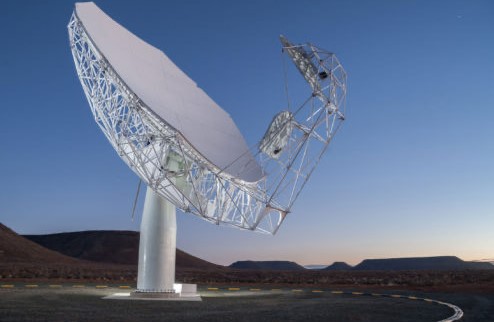Advancing Solar Physics: NCRA and NJIT Researchers Achieve High-Quality Sun Images With Innovative Approach

Advancing Solar Physics: NCRA and NJIT Researchers Achieve High-Quality Sun Images With Innovative Approach
Research has been conducted by two scientists from the Tata Institute of Fundamental Research NCRA-TIFR, Pune.
26 April 2024
By Payoshi Bisht
Dr. Devojyoti Kansabanik and Dr. Surajit Mondal, two scientists from Pune, have used a MeerKAT radio telescope located in South Africa to observe the Sun. It has been used by the National Centre of Radio Astrophysics (NCRA), Pune.
The MeerKAT telescope has enabled the NCRA to make extremely high resolution radio images of the sun, allowing them to observe extremely faint and small features.
Dr. Kansabainik has explained that it is surprising how difficult it is to study the Sun at radio wavelengths. The radio emissions come from a thin layer of the Sun’s atmosphere called the corona which can only be seen when there is a total eclipse. It is the origin of things that affect our environment, which is known as space weather.
Dr Mondal explained that there are a number of issues that come into play when imaging the sun. One of them is that the sun’s emissions change very rapidly in time, and they can also change very rapidly from a single wavelength to a near-infrared wavelength. In the case of the sun, these changes cause the images to become fuzzy, similar to how a moving car appears fuzzy in typical photographs. To compensate for this, movies not only have to be made at high frame rates, but they also need to be done at a wide range of wavelengths to get a very detailed view of what is going on in the solar environment.
In order to observe the brightest of the sources, the researchers came up with an unusual observing approach which consists of aiming the telescope at the sun directly. It is very similar to using peripheral vision to see an object. Even though the vision is a bit blurry, bright objects can still be seen. While this method allowed researchers to see the sun with the MeerKAT telescope, it also caused additional issues in producing high-quality images.
Dr. Kansabanik added that they spent a lot of time trying to figure out how the instrument interacted with the peripheral vision caused by unconventional observing mode, and they developed algorithms to calculate and correct these effects.
After accurately correcting these effects, the researchers were able to generate high-quality solar images. To check the accuracy of the images, they were compared with simulations and found to be very similar.






